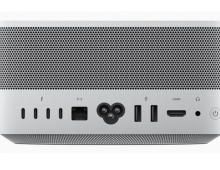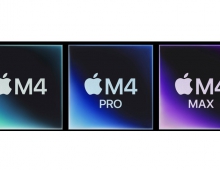
Apple and Google Remain Winners With Dominant Three-Quarters Share of Smartphone Market
Emphasis on user experience coupled with new software business models has altered the competitive landscape for smartphones, resulting in new leaders like Apple and Google now accounting for three-quarters of the global smartphone market.
IHS iSuppli forecasts that shipments this year of smartphones operating either the Apple iOS or Google's Android will reach 519.0 million units, up from 338.6 million units in 2011. The combined share this year of Apple and Google smartphones will amount to a 76 percent, with the remaining portion of market split among four other segments, including Nokia?s Symbian, Research In Motion's BlackBerry, Microsoft's Windows Phone and other systems like Bada and Linux, the research firm reported.
Smartphone share for Apple and Google last year already was at 68 percent, so this year's increase came at the tremendous expense of the other players that, except for the emerging Windows Phone platform, are forecast to be relegated to even more marginal positions in the years to come. According to IHS, by 2016, Apple and Google will command nearly 80 percent share of the smartphone market, with Windows Phone emerging as the only remaining viable competitor.
Prior to the explosive growth of the Apple and Google smartphone platforms, cellphone manufacturers had relied on specialized third-party operating system providers like Symbian and Windows to provide the core software technologies in order to build advanced mobile devices. The fundamental economics of this classic value chain has since been upended, with both Apple and Google introducing novel and successful business models for mobile software.
The success of this non-traditional business model is evident in the current market dominance by Apple and Google of the smartphone platform market - simultaneously accompanied by the decline of traditional stalwarts. For instance, the share of Nokia's Symbian operating system - previously to the world's largest mobile phone brand - will be practically nonexistent by next year as a result of the smartphone merger between the Finnish giant and Microsoft. Canada?s Research In Motion is also mired in delays in introducing a new operating system to its flagship BlackBerry phone, while its once-indomitable customer base is leaving for more popular smartphone platforms.
"The catalyst responsible for popularizing smartphones was a breakthrough in user interface design, pioneered by the Apple iOS and its influential iPhone," IHS iSuppli said.
What the iPhone did was to embody a mobile-centric product - not merely serve as an extension of the traditional PC, IHS iSuppli believes. Apple demonstrated to the mobile industry that by vertically integrating the software and hardware designs, as well as incorporating a brand-new, easy-to-use interface with a compelling new hardware component such as a capacitive touch screen, a smartphone device could be produced that completely captured the imagination of the public - and still holds in thrall to this day.
In smartly integrating the design of both the hardware and software components of the iPhone, Apple squeezed out the traditional role of software providers in the supply chain. Apple also demonstrated that the value of a device resided in not just the sum of its components but in how well the different parts worked together.
For its part, Google approached the smartphone market from a different perspective - primarily driven by the revenue potential of mobile advertisements. To capitalize on the mobile market, the Android operating system was designed as an open-source platform, giving Android a neutral third-party appeal to mobile handset makers. Such an open-source model also meant that Google could singlehandedly eliminate the licensing fee in its quest to encourage adoption of its operating system by smartphones. Google provided further incentives by giving away popular value-added applications and services, such as navigation and email.
Both Apple and Google also undertook the task of creating, and then expanding, their individual ecosystems?the App Store on Apple?s part, and Android Marketplace for Google.
Operating in a new dynamic, ecosystems redefined the smartphone industry and set the pace for future battles among platforms and handset manufacturers, such that competition was no longer dictated by the hardware design cycle alone. Instead, the ecosystem expanded on the idea of the smartphone as a self-contained product?and then transformed the mobile handset even further into a central hub for a larger set of product offerings that included unique user experiences, digital media content and additional capabilities via applications.
Smartphone share for Apple and Google last year already was at 68 percent, so this year's increase came at the tremendous expense of the other players that, except for the emerging Windows Phone platform, are forecast to be relegated to even more marginal positions in the years to come. According to IHS, by 2016, Apple and Google will command nearly 80 percent share of the smartphone market, with Windows Phone emerging as the only remaining viable competitor.
Prior to the explosive growth of the Apple and Google smartphone platforms, cellphone manufacturers had relied on specialized third-party operating system providers like Symbian and Windows to provide the core software technologies in order to build advanced mobile devices. The fundamental economics of this classic value chain has since been upended, with both Apple and Google introducing novel and successful business models for mobile software.
The success of this non-traditional business model is evident in the current market dominance by Apple and Google of the smartphone platform market - simultaneously accompanied by the decline of traditional stalwarts. For instance, the share of Nokia's Symbian operating system - previously to the world's largest mobile phone brand - will be practically nonexistent by next year as a result of the smartphone merger between the Finnish giant and Microsoft. Canada?s Research In Motion is also mired in delays in introducing a new operating system to its flagship BlackBerry phone, while its once-indomitable customer base is leaving for more popular smartphone platforms.
"The catalyst responsible for popularizing smartphones was a breakthrough in user interface design, pioneered by the Apple iOS and its influential iPhone," IHS iSuppli said.
What the iPhone did was to embody a mobile-centric product - not merely serve as an extension of the traditional PC, IHS iSuppli believes. Apple demonstrated to the mobile industry that by vertically integrating the software and hardware designs, as well as incorporating a brand-new, easy-to-use interface with a compelling new hardware component such as a capacitive touch screen, a smartphone device could be produced that completely captured the imagination of the public - and still holds in thrall to this day.
In smartly integrating the design of both the hardware and software components of the iPhone, Apple squeezed out the traditional role of software providers in the supply chain. Apple also demonstrated that the value of a device resided in not just the sum of its components but in how well the different parts worked together.
For its part, Google approached the smartphone market from a different perspective - primarily driven by the revenue potential of mobile advertisements. To capitalize on the mobile market, the Android operating system was designed as an open-source platform, giving Android a neutral third-party appeal to mobile handset makers. Such an open-source model also meant that Google could singlehandedly eliminate the licensing fee in its quest to encourage adoption of its operating system by smartphones. Google provided further incentives by giving away popular value-added applications and services, such as navigation and email.
Both Apple and Google also undertook the task of creating, and then expanding, their individual ecosystems?the App Store on Apple?s part, and Android Marketplace for Google.
Operating in a new dynamic, ecosystems redefined the smartphone industry and set the pace for future battles among platforms and handset manufacturers, such that competition was no longer dictated by the hardware design cycle alone. Instead, the ecosystem expanded on the idea of the smartphone as a self-contained product?and then transformed the mobile handset even further into a central hub for a larger set of product offerings that included unique user experiences, digital media content and additional capabilities via applications.





















